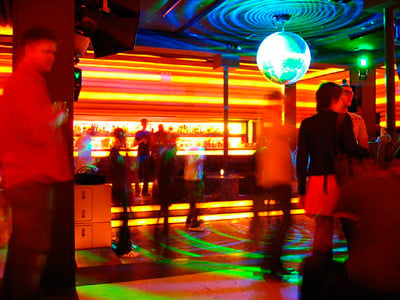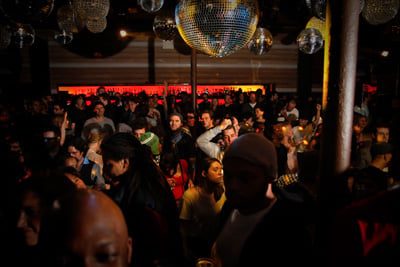Since the dawn of man, we’ve all heard tales of the mythological Fountain of Youth — the magical spring that restores the vigor of anyone who drinks from its waters. Many have searched for it, and as far as we know, none have had luck. In nightlife, the quest is  for a formula, rather than a physical entity. Club owners all around the nation grapple with the test of time; instead of dealing with the wanted problem of venues growing old, the issue is quite the opposite.
for a formula, rather than a physical entity. Club owners all around the nation grapple with the test of time; instead of dealing with the wanted problem of venues growing old, the issue is quite the opposite.
In an industry that’s constantly evolving, the average lifespan of a nightlife venue typically doesn’t surpass the two-year mark. When a club goes down, owners decide that they need to change their “formula,” opting for changes in everything from marketing tactics to music formatting. If the owners decide to stay in the game, they’ll pack up shop, find another location and rename their new enterprise, praying that this time their new formula will finally work out.
Far too many New York nightlife venues have come and gone in the span of a year, too many to name. The real commentary lies in those that have stood the test of time and managed to evolve and create brand equity, especially those whose whispers of success reach far beyond state lines and into other continents. Enter Cielo Nightclub, New York City’s premier electronic dance music (EDM) venue and a club whose management has created its own recipe for success.
In January, Cielo achieved the seemingly unachievable in nightlife: a nine-year anniversary. The celebration featured a phenomenal set of music by one of EDM’s leading ladies, Cassie, as well as a packed house of loyal patrons and nightlife impresarios who wanted to be a part of an apparently historical event.
“Cielo has been a labor of love from the very beginning for all those involved,” says co-owner Nicolas Matar. “Everything we do is for the love of dance music – from the sound, hospitality, lighting and quality of music, all are designed to provide a superior night of clubbing.”
Although it’s located in New York City’s famed Meatpacking District, Cielo’s humble beginnings are what helped pioneer the nightlife movement in an area that was best known for its meat warehouses and transvestites. Although many other ingredients came into play, one main characteristic has lead to Cielo’s success: consistency.
“Consistency, consistency, consistency,” Matar says. “From the outset, Cielo has been a music-driven nightclub specializing in electronic music. It was built for dancing.”
And dancing there was — and still is. Some of the biggest names in electronic dance music have graced the DJ booth at Cielo, from James Zabiela to Roger Sanchez, Mark Knight to Nick Warren. The club always has stayed true to its music formatting, to which many attribute its success. While some clubs lose their identity in various theme nights host featuring an array of sounds, Cielo is open to new forms of music, so long as the overarching genre is EDM.
“It’s imperative to have a musical identity if you want to build a brand over time,” Matar says. “You can’t go from dance music to hip hop to mash-up like clubs typically do.”
hop to mash-up like clubs typically do.”
While big EDM names are featured on a consistent basis, Cielo’s management also has cultivated weekly parties that have struck a chord among legions of dance-music fans who keep coming back for more — even on Monday nights. Deep Space, featuring DJ Francois K, is one of the nation’s longest-running weekly parties. The ongoing promotion cements the fact that a resident DJ currently is one of a successful nightclub’s most important characteristics.
“Historically, all of the great underground clubbing institutions around the world have had DJ residencies,” Matar says. “This allows you to create a musical identity and build brand equity.”
Even though nightlife venues seem to pop up any given weekend in New York City, claiming to be most sought after and talked about hotspots in the market, Cielo has never had an issue when it comes to relevancy. While the Provocateurs and Boom Boom Rooms of New York City draw in the Kardashians and Timberlakes of the world, the clientele’s attention span is short. They’re in constant search of the next exclusive venue whose door is tough and bottle service is sumptuous. But lack of attention to the music will keep dance floors empty, ultimately hurting a club’s shelf life.
“A common misconception is that only new establishments, open for two years or less, are relevant,” Matar says. “This is true for the A-list, bottle service, celebrity-driven model. But the music-driven model has longevity and is executed the right way.”
